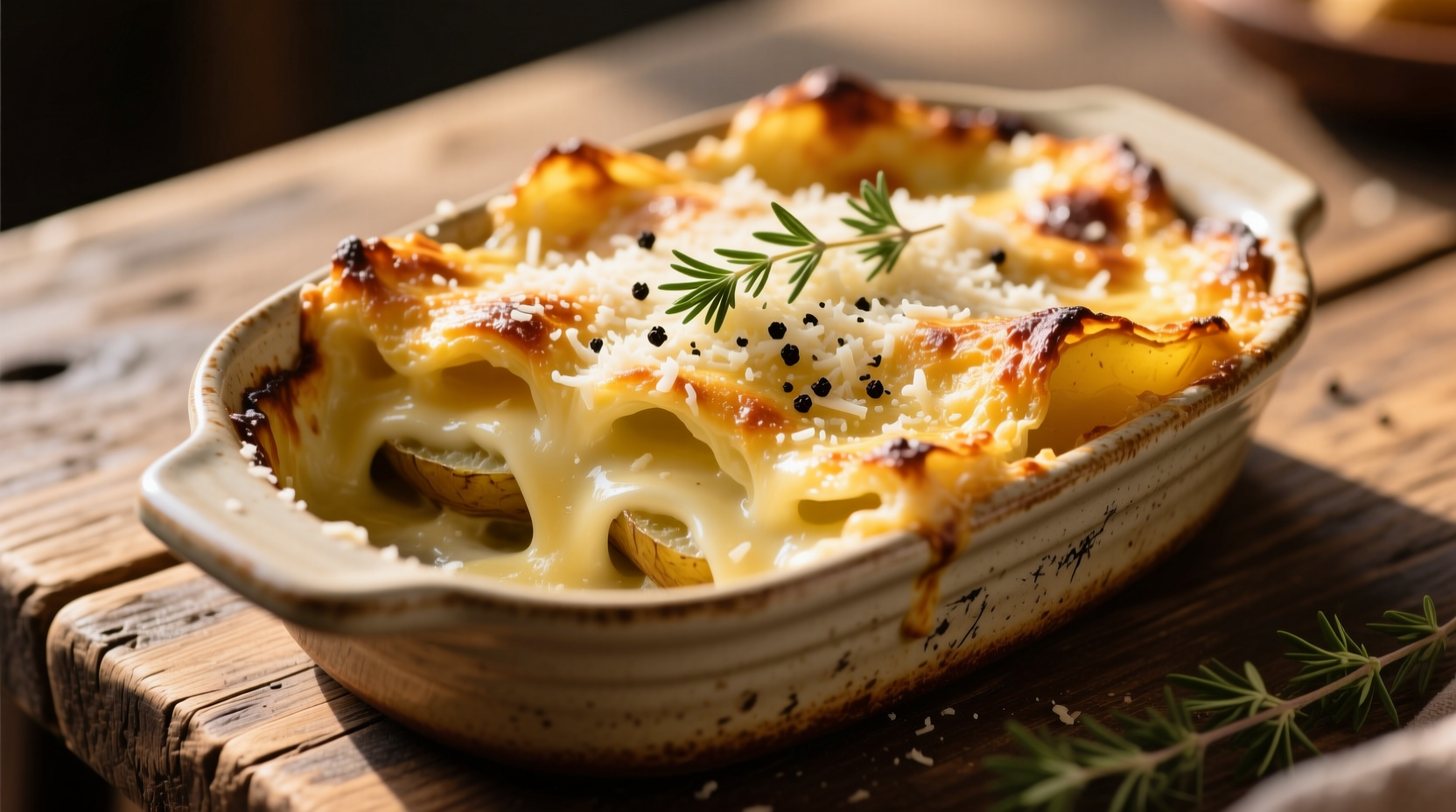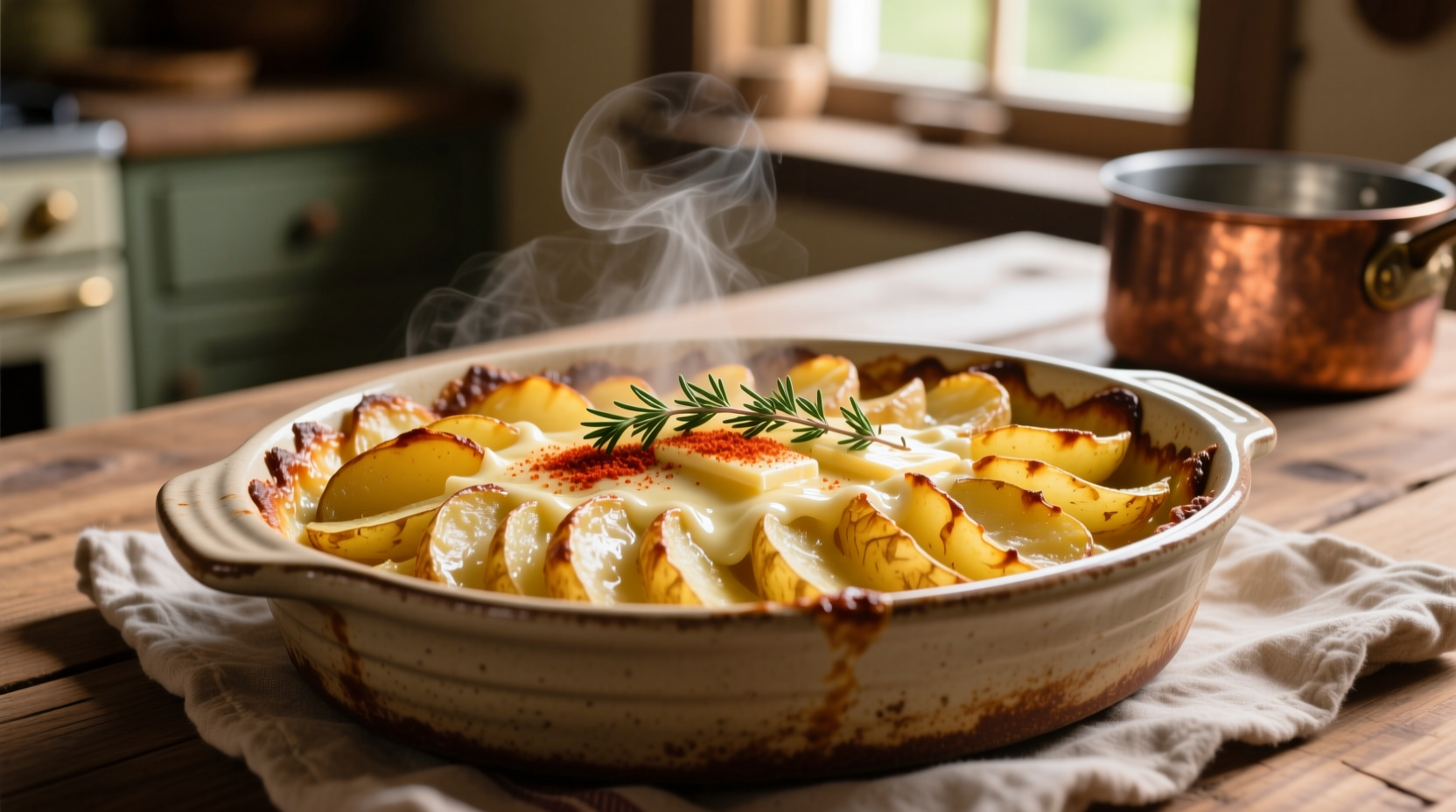Discover the secrets to perfecting this beloved side dish that's graced holiday tables and family dinners for generations. Whether you're preparing your first batch or refining your technique, this guide delivers professional insights that transform ordinary potatoes into extraordinary comfort food.
What Exactly Are Scalloped Potatoes?
The term "scalloped" refers to the cooking method rather than the potato shape. Historically, "scallop" described a dish baked with a creamy sauce in a scalloped-edged dish. Understanding the distinction between scalloped potatoes and their cheesy cousin, au gratin, is essential for authentic preparation.
| Characteristic | Scalloped Potatoes | Au Gratin Potatoes |
|---|---|---|
| Primary Sauce Base | Cream or milk-based | Cheese-enriched sauce |
| Cheese Content | No cheese in traditional recipes | Significant cheese component |
| Origin | English cooking tradition | French culinary technique |
| Texture Profile | Creamy with distinct potato layers | Rich, cheesy, more unified texture |
Historical Evolution of This Comfort Food Classic
Tracing back to 18th century England, scalloped potatoes evolved significantly through American culinary adaptation. Food historians at the National Center for Food History document this transformation:
- 1784: First recorded "scallop" recipe appears in English cookbook "The Art of Cookery Made Plain and Easy" by Hannah Glasse, featuring oysters and breadcrumbs
- Early 1800s: American cookbooks adapt the technique for potatoes, eliminating seafood
- 1900s: Cream of mushroom soup becomes popular shortcut in Depression-era cooking
- Post-WWII: Cheese incorporation blurs lines between scalloped and au gratin preparations
- Modern Era: Return to traditional cream-based preparations among culinary purists

Essential Ingredients for Authentic Scalloped Potatoes
The magic happens through careful ingredient selection. Professional chefs emphasize these non-negotiable elements:
Potato Selection Matters Most
Russet potatoes remain the gold standard for their high starch content and ability to absorb flavors while maintaining structure. According to agricultural research from University of Minnesota Extension, russets contain 16-22% starch compared to 12-16% in Yukon Golds, creating the ideal texture when baked slowly.
Cream Sauce Science
The sauce isn't merely poured over potatoes—it's carefully constructed. The perfect ratio combines:
- 2 parts whole milk or light cream
- 1 part butter
- 1/4 cup all-purpose flour per cup of liquid
- Generous seasoning of white pepper (black pepper creates unattractive specks)
Step-by-Step Preparation Guide
Follow this professional technique for consistently perfect results:
Preparation Phase (15 minutes)
- Peel and thinly slice potatoes (1/8 inch thick) using a mandoline for uniformity
- Immediately submerge slices in cold water to prevent oxidation
- Prepare cream sauce by melting butter, whisking in flour to create roux, then gradually adding warmed milk
- Season sauce with salt, white pepper, and optional nutmeg (1/8 teaspoon enhances dairy flavors)
Baking Process (60-75 minutes)
- Drain potatoes thoroughly and arrange in greased baking dish, slightly overlapping
- Pour warm sauce evenly over potatoes, ensuring complete coverage
- Cover with parchment paper directly on surface, then foil
- Bake at 325°F (163°C) for 45 minutes
- Remove covers, increase heat to 375°F (190°C), bake 15-20 minutes until golden
- Rest 10 minutes before serving to allow sauce to set
Avoiding Common Scalloped Potato Failures
Even experienced cooks encounter these pitfalls. Understanding the science behind solutions ensures success:
Problem: Soggy Bottom Layer
Cause: Inadequate heat distribution and excess moisture
Solution: Place baking dish on preheated baking sheet and ensure potatoes are thoroughly drained before layering. The National Center for Home Food Preservation confirms that proper potato drainage reduces water content by up to 30%, preventing sauce dilution.
Problem: Curdled Sauce
Cause: Temperature shock or acidic ingredients
Solution: Warm dairy gradually and avoid adding acidic ingredients like tomatoes directly to the sauce. Maintain baking temperature below 375°F during initial cooking phase.
Creative Variations Worth Trying
While traditional preparation shines, these chef-approved variations add exciting dimensions:
- Herb-Infused: Steep fresh thyme or rosemary in warm cream for 30 minutes before making sauce
- Caramelized Onion: Layer thinly sliced onions between potato layers for sweet complexity
- Garlic Confit: Add 4-5 whole garlic cloves to cream while warming for subtle flavor infusion
- Mustard Twist: Incorporate 1 tablespoon Dijon mustard into sauce for tangy depth
Storage and Reheating Best Practices
Proper handling maintains texture and flavor when enjoying leftovers:
- Cool completely before refrigerating (within 2 hours of baking)
- Store in airtight container for up to 4 days
- Reheat covered with foil at 325°F until internal temperature reaches 165°F
- Add 2-3 tablespoons milk when reheating to restore creamy texture
- Freeze portions for up to 3 months (thaw overnight before reheating)











 浙公网安备
33010002000092号
浙公网安备
33010002000092号 浙B2-20120091-4
浙B2-20120091-4